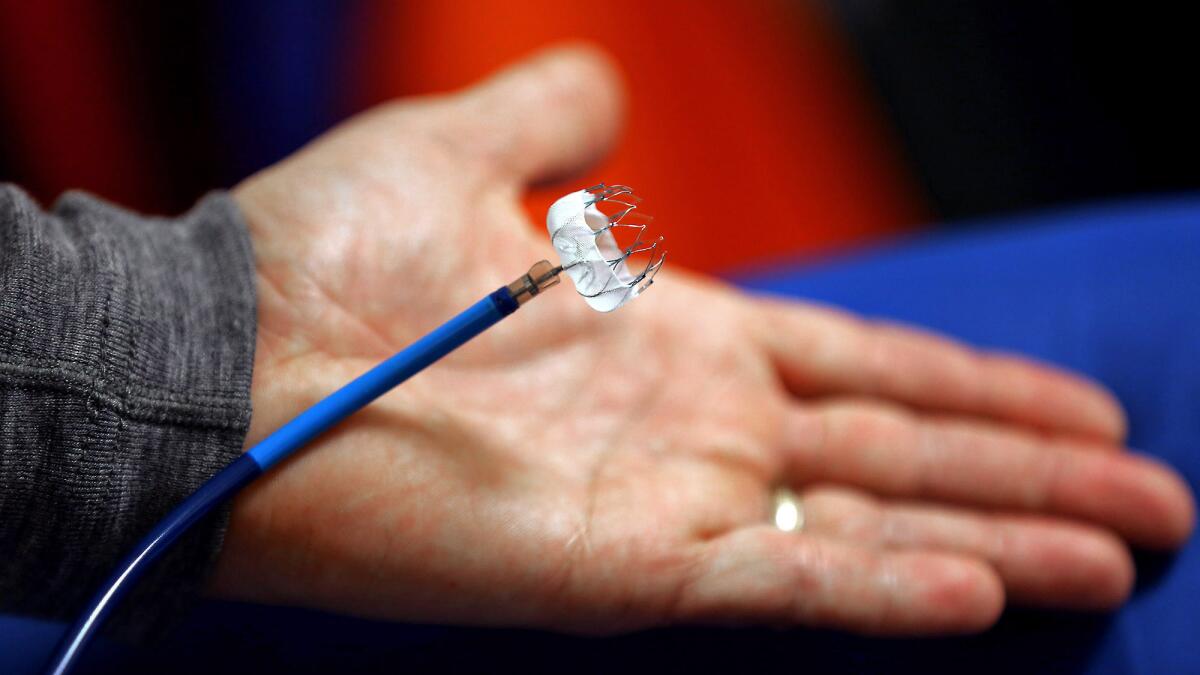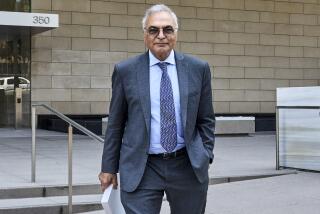Southland surgeons implant Watchman heart device after it gets FDA OK

- Share via
Surgeons at two Southern California hospitals on Monday implanted a controversial heart device that struggled for years to gain the approval of the U.S. Food and Drug Administration.
The Watchman device, made by Boston Scientific Corp. and designed to reduce the risk of stroke for people with irregular heartbeats, was approved March 13 by the FDA after years of trials, rejections and debate. An FDA advisory panel in October voted 6 to 5 that the device’s benefits outweighed its risks.
Surgeons at St. John’s Health Center in Santa Monica and Cedars-Sinai Medical Center in Los Angeles were the first in the United States to perform Watchman surgeries after the FDA approval.
The device, which resembles a tiny umbrella, is inserted through a catheter in the groin area. It is used to seal off a pouch on the left side of the heart that is a major source of potentially deadly blood clots. The device is intended to prevent those clots from entering the bloodstream, where they can travel to the brain and cause strokes.
For decades, most people with atrial fibrillation — an abnormal heartbeat — have been treated with blood thinners, which decrease clots in the heart.
But blood thinners can create complications, such as internal bleeding. Cardiologists have said ideal candidates for the Watchman would be people for whom blood-thinning drugs were considered risky or not effective.
Mary Thomsen, a 77-year-old resident of Westwood, has waited months for the Watchman after blood-thinning medicine caused internal bleeding.
“I’m happy to do it,” Thomsen said shortly before the surgery at St. John’s. “It’s a very important procedure. It’s going to make life normal for a lot of people.”
Dr. Shephal Doshi performed Thomsen’s procedure in less than one hour Monday morning. Afterward, he smiled and high-fived a Boston Scientific representative who was observing the surgery. “This is as good as we could have expected the procedure to go,” said Doshi, director of cardiac electrophysiology at St. John’s.
Doshi said he performed more than 200 Watchman surgeries during clinical testing. Monday’s surgery was the first he performed since the FDA approval.
A few miles away, Dr. Saibal Kar implanted a Watchman device inside 87-year-old Maria Sandru at Cedars-Sinai.
Doshi and Kar were chosen by Boston Scientific to perform the first post-FDA procedures because of their experience with the device during clinical trials.
“This is a transforming technology,” Kar said. “It provides a new and hopeful alternative to reduce the risk of strokes.”
This month’s FDA approval came after a lengthy review, which included evaluations by three advisory panels, the first more than five years ago.
In 2009, a panel narrowly recommended approval, but the FDA declined to follow that advice because of concerns about how the study was performed. A 2013 advisory panel again recommended approval, but the FDA opted for a third panel after concern about patient strokes.
Demand for the device could be big. More than 5 million people in the United States have atrial fibrillation, creating a massive pool of potential customers. Doshi said he expects to perform 15 to 20 Watchman procedures a week at St. John’s alone.
Twitter: @spfeifer22
More to Read
Inside the business of entertainment
The Wide Shot brings you news, analysis and insights on everything from streaming wars to production — and what it all means for the future.
You may occasionally receive promotional content from the Los Angeles Times.










